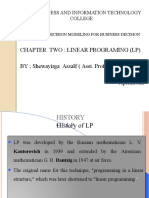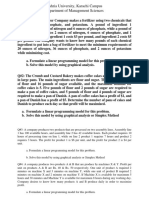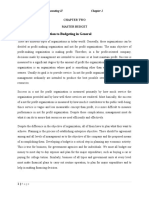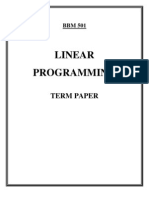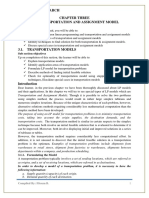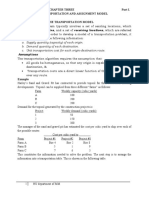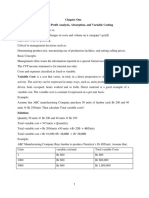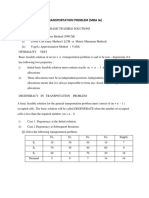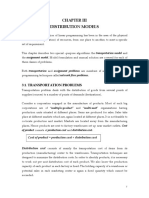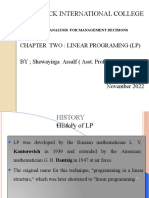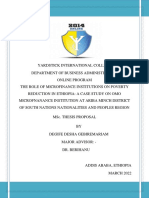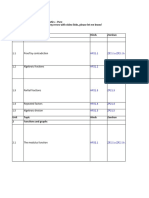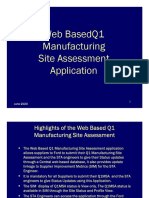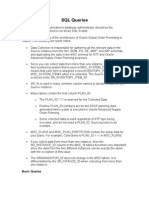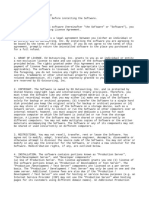0% found this document useful (0 votes)
234 views51 pagesLecture 2
Linear programming can help DeReal determine how to allocate its advertising budget across comedy and football spots to maximize potential customers reached.
The decision variables are:
X1 = number of comedy spots
X2 = number of football spots
The objective is to maximize total viewers:
Z = 7X1 + 3X2
The constraints are:
Budget limit of 100 birr
X1 * 50 + X2 * 75 ≤ 100
X1, X2 ≥ 0
This mathematical model can be solved to find the optimal allocation of advertising spots.
Uploaded by
degife deshaCopyright
© © All Rights Reserved
We take content rights seriously. If you suspect this is your content, claim it here.
Available Formats
Download as PDF, TXT or read online on Scribd
0% found this document useful (0 votes)
234 views51 pagesLecture 2
Linear programming can help DeReal determine how to allocate its advertising budget across comedy and football spots to maximize potential customers reached.
The decision variables are:
X1 = number of comedy spots
X2 = number of football spots
The objective is to maximize total viewers:
Z = 7X1 + 3X2
The constraints are:
Budget limit of 100 birr
X1 * 50 + X2 * 75 ≤ 100
X1, X2 ≥ 0
This mathematical model can be solved to find the optimal allocation of advertising spots.
Uploaded by
degife deshaCopyright
© © All Rights Reserved
We take content rights seriously. If you suspect this is your content, claim it here.
Available Formats
Download as PDF, TXT or read online on Scribd
/ 51
